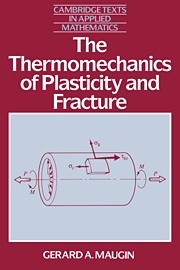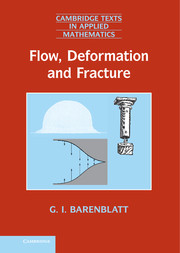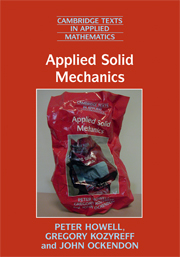The Thermomechanics of Plasticity and Fracture
This book concentrates on the mathematical theory of plasticity and fracture, and presents it in a thermomechanical framework. It follows the macroscopic, phenomenological approach, which proposes equations abstracted from generally accepted experimental facts, studies the adequacy of the consequences drawn from these equations to those facts, and then provides useful tools for designers and engineers. Many examples of plasticity and fracture are presented, and each chapter concludes with problems for students.
- Includes many worked examples
- Material drawn from author's graduate course
Reviews & endorsements
"One could characterize the style of the book as 'robust'. It has obvious pedagogical appeal. In the introduction the author expresses his hope that the book will find its place both on the student's shelf and in the professional scientist's office. The reviewer strongly recommends that." Miroslav Silhavy, Mathematical Reviews
Product details
June 1992Paperback
9780521397803
372 pages
230 × 152 × 24 mm
0.549kg
85 b/w illus.
Available
Table of Contents
- Preface
- Historical perspective
- Notation
- 1. Introduction to plasticity: experimental facts
- 2. Thermomechanics of elastoviscoplastic continua
- 3. Small-strain elastoplasticity
- 4. Problems in perfect elastoplasticity
- 5. Elastoplasticity with strain-hardening
- 6. Elements of limit analysis
- 7. Crack propagation and fracture mechanics
- 8. Elastoplasticity with finite strains
- 9. Homogenization of elastoplastic composites
- 10. Coupling between plasticity and damage
- 11. Numerical solution of plasticity problems
- 12. Experimental study using infrared thermography
- Appendices
- Further reading
- Bibliography
- Index.








